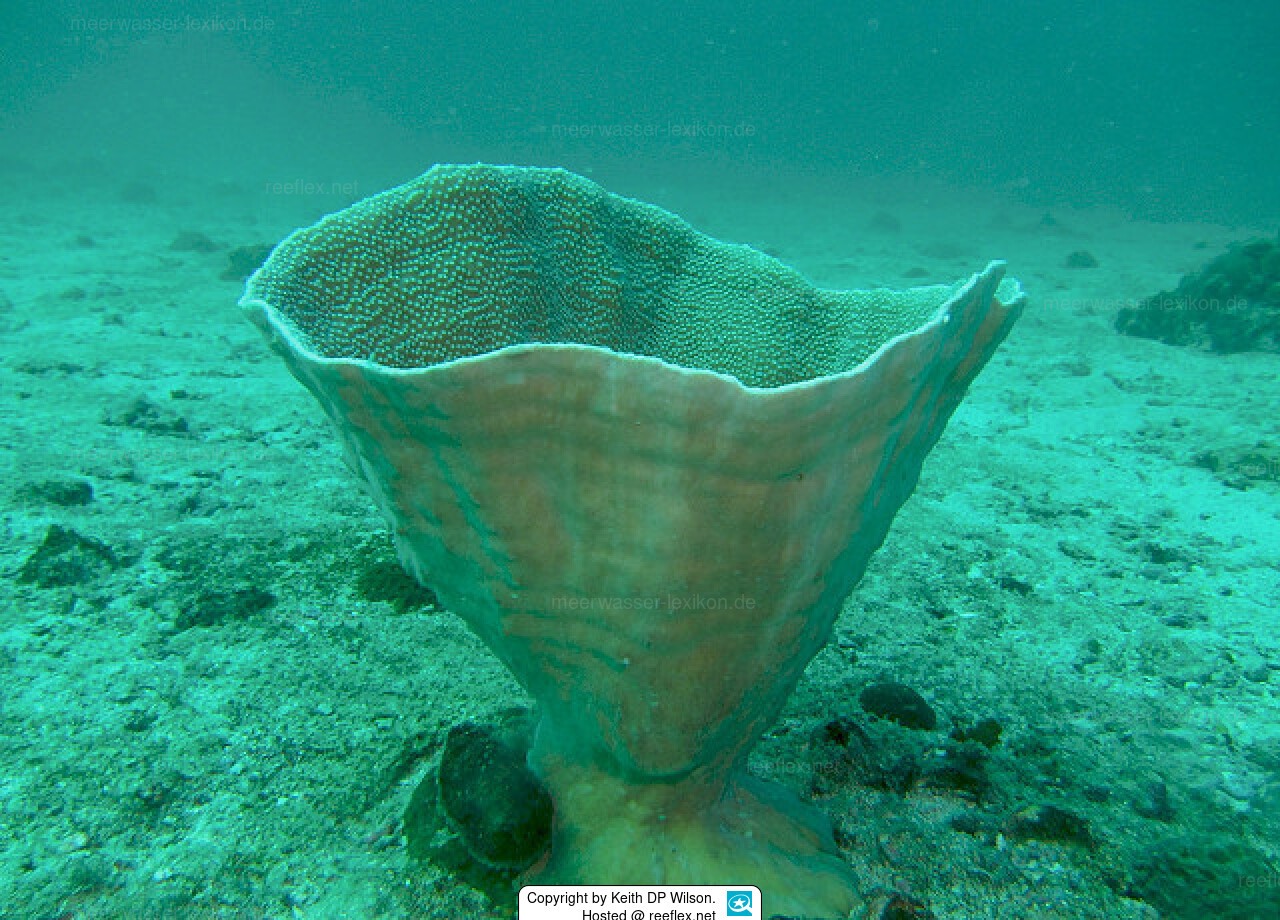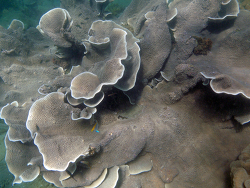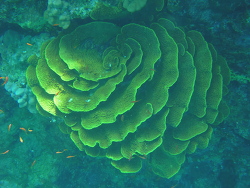Info
Lamarck, 1816
Similar Species: Turbinaria frondens. See also T. reniformis, which can be recognised underwater by its colour, but also by its more horizontal fronds and its more immersed corallites, giving a smooth appearance.
Synonyms:
Explanaria mesenterina Lamarck, 1816
Gemmipora mesenterina (Lamarck, 1816)
Turbinaria crassa Bernard, 1896
Turbinaria speciosa Bernard, 1896
Turbinaria tubifera Bernard, 1896
Turbinaria venusta Bernard, 1896
Classification: Biota > Animalia (Kingdom) > Cnidaria (Phylum) > Anthozoa (Class) > Hexacorallia (Subclass) > Scleractinia (Order) > Dendrophylliidae (Family) > Turbinaria (Genus) > Turbinaria mesenterina (Species)







 Keith DP Wilson, UK
Keith DP Wilson, UK























